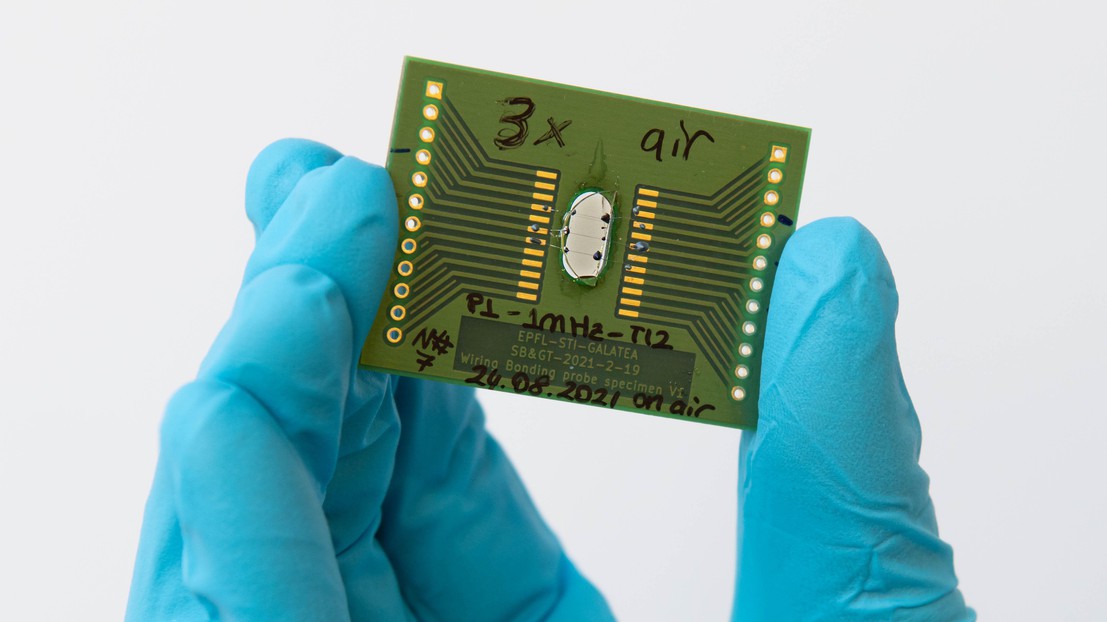Tokyo (SCCIJ) – Researchers at the Swiss Federal Institute of Technology Lausanne and the Tokyo Institute of Technology have generated an electrically conductive glass with a simple etching process. The new technology enables harvesting electricity from a single material window glass while remaining transparent.

A photoconductive circuit directly patterned onto a glass surface with femtosecond laser light (© EPFL / Lisa Ackermann).
Eureka moment
Tellurite glass is an industrial substance used to make optical fibers. What happens when you expose this glass to an extremely brief and strong infrared laser light lasting only a femtosecond, which is one-millionth of one billionth of a second? That’s the question that Gözden Torun at the Galatea Lab of the Swiss Federal Institute of Technology in Lausanne (EPFl) aimed to answer in her thesis work.
Torun who earlier studied at Japan’s Tohoku University collaborated with scientists of the Tokyo Institute of Technology who prepared the tellurite material for the experiments. Interested in how the atoms in the tellurite glass would reorganize when exposed to fast pulses of high-energy femtosecond laser light, the scientists stumbled upon the formation of nanoscale tellurium and tellurium oxide crystals, both semiconducting materials.
That was the eureka moment for them, since a semiconducting material exposed to daylight generates electricity. After exposing a simple line pattern on the surface of a tellurite glass 1 cm in diameter, Torun found that it could generate a current when exposing it to UV light and the visible spectrum, and this, reliably for months.
No additional steps
“It’s fantastic, we’re locally turning glass into a semiconductor using light,” explains Yves Bellouard who runs EPFL’s Galatea Laboratory. “We’re essentially transforming materials into something else, perhaps approaching the dream of the alchemist!” An interesting twist to the technique is that no additional materials are needed in the process. All you need is tellurite glass and a femtosecond laser to make an active photoconductive material.
“We didn’t expect to see that kind of phenomenon by using lasers,” said Tetsuo Kishi, an associate professor at the Tokyo Institute of Technology, expert for glass materials and laser processing, and co-author of the scientific paper in the journal Physical Review Applied.
“The glass is a passive material which just lets the light through, but after using a femtosecond laser, the glass changes to an active material which can transmit electrical current like a semiconductor,” Kishi told the Japanese news agency Kyodo. “We could change the shape of the glass and make it lighter and thinner by altering the composition so that it will be more useful and practical,” Kishi added.
Although challenges remain, the researchers hope the day will come when windows partially covered by tellurite glass transformed by femtosecond lasers may be used to generate clean energy.
Text: Hillary Sanctuary/EPFL (Editing by SCCIJ)





























